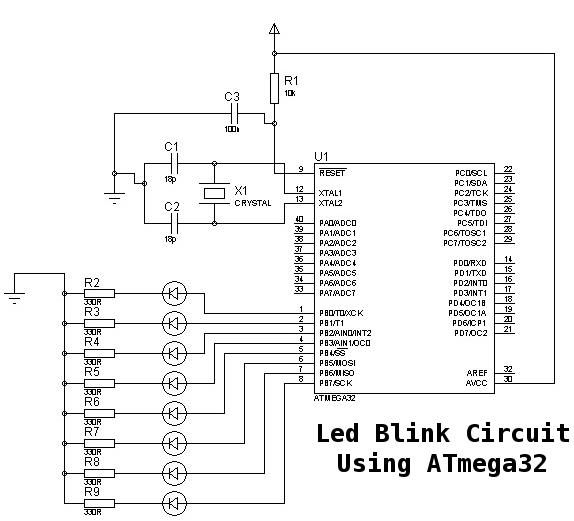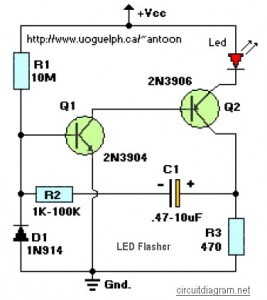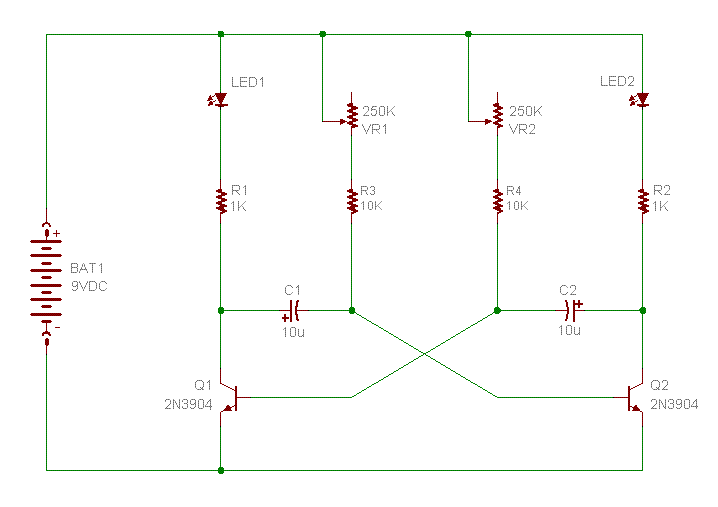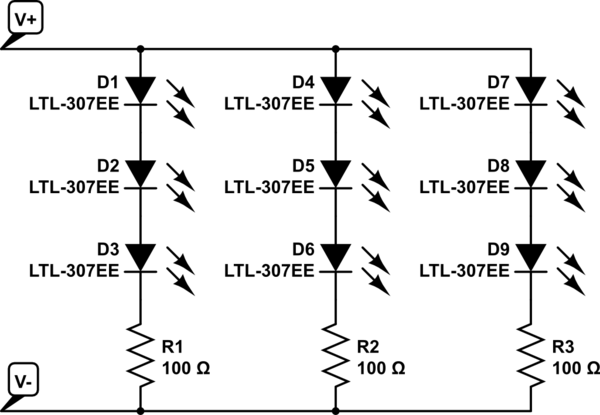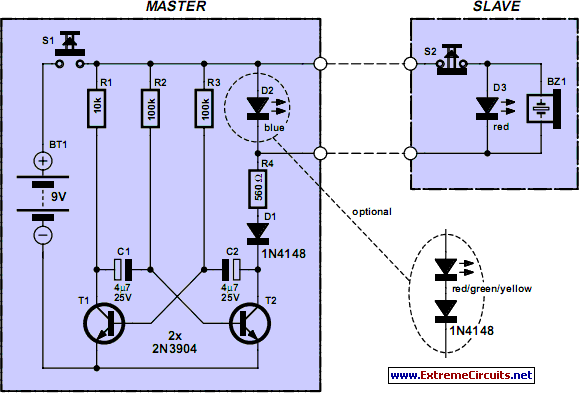
White led driver
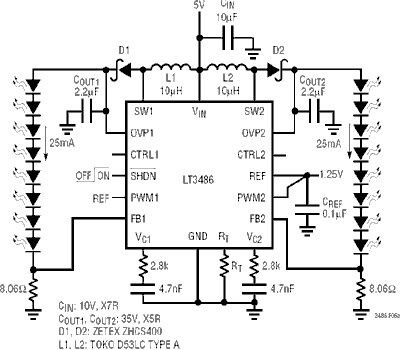
After collecting several white LEDs from damaged mobile phones, a project was initiated to construct an LED searchlight. There are two approaches to achieve this: the first is a basic method, which involves connecting white LEDs directly to a battery with a ballast resistor, although this leads to diminishing brightness as the battery depletes. The second, more advanced method involves creating a specialized LED driver. Most modern white LEDs are essentially blue LEDs coated to emit the additional wavelengths necessary for white light. To operate LEDs at full efficiency, a constant current must be supplied. LEDs can be connected in a daisy-chain configuration using a single current ballast, but this requires a higher voltage (approximately 3V per LED) or can be connected in parallel, necessitating individual ballasts for each LED. Manufacturers produce dedicated LED driver chips that allow for daisy-chaining of LEDs while operating from a single cell. A sample LED driver from Linear Technologies, the LT3486, is a dual-channel white LED driver designed for use with a single Li-ion cell. It functions as a generic step-up converter with feedback from a current shunt resistor and includes over-voltage protection. The sample circuit supports 2 to 8 white LEDs connected to the chip, with another example supporting up to 16 LEDs. The limitations are primarily based on the maximum power, output voltage (35V), and typical current (~25mA) per channel. The circuit design is straightforward, and the components are readily available. However, there were challenges in sourcing small 10µH inductors, which were salvaged from Samsung digital cameras. A fast Schottky diode was recommended, specifically the ZHCS400 (40V, 400mA), but an alternative diode, the IR1F4 (10BQ040), rated at 40V and 1A, was used instead, although its speed was uncertain. During initial testing, only one channel was operational, powering 9 white LEDs from a mobile phone backlight with a power supply of one Li-ion cell (~4V). The voltage across the LEDs reached 29V, while the open circuit voltage was 36V. The white LEDs overheated due to miscalculations leading to overload. Additionally, there was a PCB design error where the start pin was incorrectly connected to the reference pin, causing the device not to autostart. This was rectified by connecting the start pin to Vcc using a large blue resistor. The final configuration included 18 LEDs, producing significant brightness, although capturing the effect with a camera proved challenging, as the camera adjusted exposure settings to 1/500.
The LED searchlight project utilizes an LT3486 LED driver, which is essential for achieving efficient operation of the white LEDs. The LT3486 is designed to boost the voltage from a single Li-ion cell to the required levels for driving multiple LEDs in series or parallel configurations. The driver chip incorporates feedback mechanisms that ensure the output current remains stable, which is crucial for maintaining the brightness and longevity of the LEDs.
The circuit design employs a simple layout, where the LT3486 connects to the LEDs through a current shunt resistor, allowing for real-time monitoring of the current flowing through the LEDs. This feedback loop helps prevent overcurrent conditions that could damage the LEDs. The inclusion of over-voltage protection is also a critical feature, safeguarding the LEDs from voltage spikes that could occur during operation.
In terms of component selection, the use of a Schottky diode is important for rectifying the output of the step-up converter. The choice of diode affects the efficiency of the circuit, as a slower diode may introduce losses that reduce overall performance. The inductors used in the circuit play a vital role in the step-up conversion process, and sourcing appropriate inductors is essential for achieving the desired output voltage.
Thermal management is another consideration, as the LEDs can generate significant heat during operation. Proper heat sinking or thermal dissipation methods should be employed to ensure the LEDs operate within their safe temperature range. The initial overheating issue indicates a need for careful current calculations and possibly the integration of additional thermal management solutions.
Overall, this LED searchlight project exemplifies the practical application of modern LED technology and driver circuits, showcasing the balance between component selection, circuit design, and thermal management to achieve an effective lighting solution.After I smashed about 5 mobile phones and collected some white LEDs, I decided to build some some LED searchlight. There are two ways to solve this problem: first, Chinese version, just connect some white LED`s to battery and use some ballast resistor.
And watch you spotlight fading while the battery is loosing it`s power. Ante the second, hi-tech , way. To build special LED driver. almost all recent white LEDs are in fact blue LEDs with special coating to emit missing wavelengths and the result is white color. To use LED and full efficiency, you must supply constant working current to LED. It is possible to connect LED in daisy chain way using only one current ballast, but the voltage must be quite high (~3V per LED) or connect them in parallel.
But in parallel mode you must use separate ballast for each LED. Chip manufacturers make special chips- LED drivers. This chip lets you to connect LEDs in daisy chain and is working from single cell. I received sample from Linear Technologies. It is LT3486, dual channel white LED driver from single Li-ion cell. It is generic step-up converter with feedback from current shunt resistor and over-voltage protection. In sample circuit there are 2G—8 white LEDs connected to chip. But other example is with 2G—16! I thing the limit is only max power on the chip, max voltage on the output (35V) and max current (~25mA typical) per channel.
And the number of diodes are not very significant value. The circuit is very simple. All component are easy to get. As I love using second hand components, I had some difficulties collecting very small 10G H inductors. Thanks to Samsung digital cameras, I removed inductor from camera`s PCBs. Other component was fast schottky diode- recommended one was ZHCS400 (40V, 400mA), but I placed IR1F4 (10BQ040), 40V, 1A.
I don`t know if it is fast enough. This is first run. Only one channel is working- 9 White LEDs from mobile phone back-light. Power supply is one LiIon cell (~4V). The voltage across LEDs are 29V, empty circuit voltage- 36V. White LEDs are getting quite hot- I made some mistake in calculations and LEDs are overloaded. The PCB is with errors- I made connection of start pin to Ref pin. But when device is not started, Vref is 0 and device didn`t autostart. I replaced this connection with big blue resistor to Vcc. Here is full 18 LEDs. It is quite bright device, but I can`t show the effect with my photo camera. The only thing my camera decided, that exposure must be 1 from 500 🔗 External reference
The LED searchlight project utilizes an LT3486 LED driver, which is essential for achieving efficient operation of the white LEDs. The LT3486 is designed to boost the voltage from a single Li-ion cell to the required levels for driving multiple LEDs in series or parallel configurations. The driver chip incorporates feedback mechanisms that ensure the output current remains stable, which is crucial for maintaining the brightness and longevity of the LEDs.
The circuit design employs a simple layout, where the LT3486 connects to the LEDs through a current shunt resistor, allowing for real-time monitoring of the current flowing through the LEDs. This feedback loop helps prevent overcurrent conditions that could damage the LEDs. The inclusion of over-voltage protection is also a critical feature, safeguarding the LEDs from voltage spikes that could occur during operation.
In terms of component selection, the use of a Schottky diode is important for rectifying the output of the step-up converter. The choice of diode affects the efficiency of the circuit, as a slower diode may introduce losses that reduce overall performance. The inductors used in the circuit play a vital role in the step-up conversion process, and sourcing appropriate inductors is essential for achieving the desired output voltage.
Thermal management is another consideration, as the LEDs can generate significant heat during operation. Proper heat sinking or thermal dissipation methods should be employed to ensure the LEDs operate within their safe temperature range. The initial overheating issue indicates a need for careful current calculations and possibly the integration of additional thermal management solutions.
Overall, this LED searchlight project exemplifies the practical application of modern LED technology and driver circuits, showcasing the balance between component selection, circuit design, and thermal management to achieve an effective lighting solution.After I smashed about 5 mobile phones and collected some white LEDs, I decided to build some some LED searchlight. There are two ways to solve this problem: first, Chinese version, just connect some white LED`s to battery and use some ballast resistor.
And watch you spotlight fading while the battery is loosing it`s power. Ante the second, hi-tech , way. To build special LED driver. almost all recent white LEDs are in fact blue LEDs with special coating to emit missing wavelengths and the result is white color. To use LED and full efficiency, you must supply constant working current to LED. It is possible to connect LED in daisy chain way using only one current ballast, but the voltage must be quite high (~3V per LED) or connect them in parallel.
But in parallel mode you must use separate ballast for each LED. Chip manufacturers make special chips- LED drivers. This chip lets you to connect LEDs in daisy chain and is working from single cell. I received sample from Linear Technologies. It is LT3486, dual channel white LED driver from single Li-ion cell. It is generic step-up converter with feedback from current shunt resistor and over-voltage protection. In sample circuit there are 2G—8 white LEDs connected to chip. But other example is with 2G—16! I thing the limit is only max power on the chip, max voltage on the output (35V) and max current (~25mA typical) per channel.
And the number of diodes are not very significant value. The circuit is very simple. All component are easy to get. As I love using second hand components, I had some difficulties collecting very small 10G H inductors. Thanks to Samsung digital cameras, I removed inductor from camera`s PCBs. Other component was fast schottky diode- recommended one was ZHCS400 (40V, 400mA), but I placed IR1F4 (10BQ040), 40V, 1A.
I don`t know if it is fast enough. This is first run. Only one channel is working- 9 White LEDs from mobile phone back-light. Power supply is one LiIon cell (~4V). The voltage across LEDs are 29V, empty circuit voltage- 36V. White LEDs are getting quite hot- I made some mistake in calculations and LEDs are overloaded. The PCB is with errors- I made connection of start pin to Ref pin. But when device is not started, Vref is 0 and device didn`t autostart. I replaced this connection with big blue resistor to Vcc. Here is full 18 LEDs. It is quite bright device, but I can`t show the effect with my photo camera. The only thing my camera decided, that exposure must be 1 from 500 🔗 External reference
